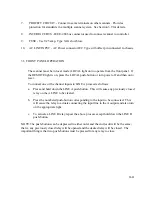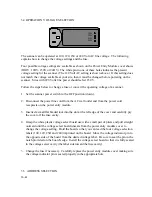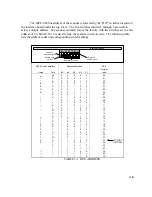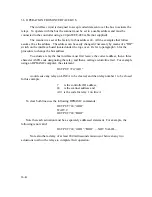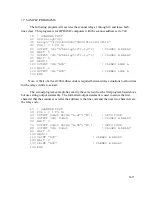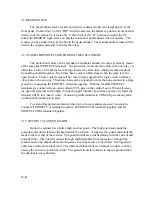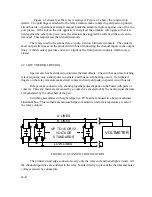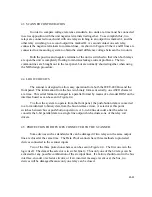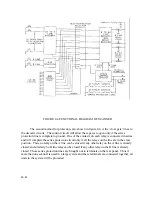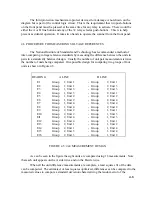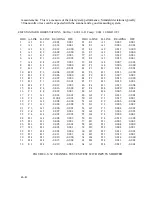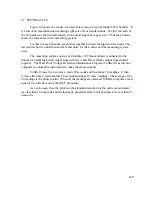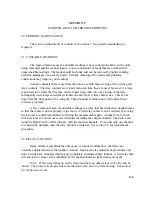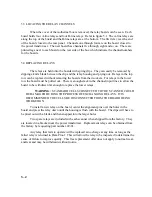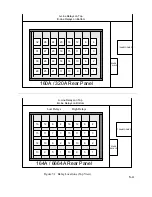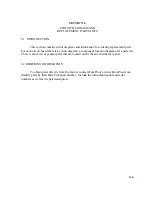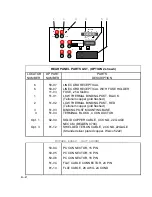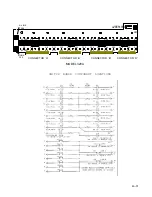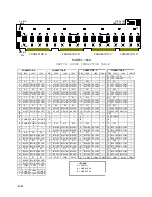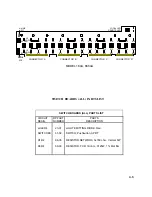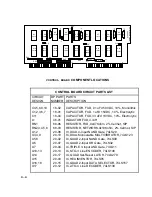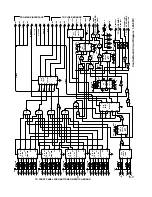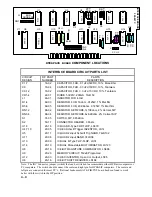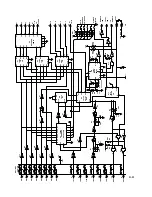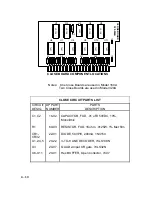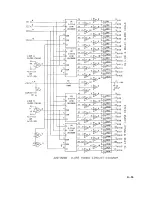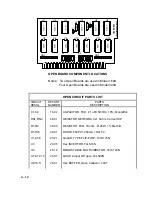
5-1
SECTION 5
MAINTENANCE AND TROUBLE SHOOTING
5.0 PERIODIC MAINTENANCE
There are no adjustments or controls in the scanner. No periodic maintenance is
required.
5.1 UNSTABLE READINGS
The most common cause for unstable readings is poor connections between the units
being measured and the scanner inputs. Loose connections or leads that are oxidized will
cause unstable readings. The leads should be shinny and can be restored by lightly sanding
with fine sandpaper or an emery board. Periodic cleaning of the leads and tightening
connections may improve your readings.
Scanner channels that are used less than once a month may develop a film on the gold
relay contacts. The relay contacts are wiped clean each time they are used; however, if a relay
is not used for a while the film may not be wiped clean with only one closing of the relay.
Infrequently used relays should be switched on and off a few times before use. This can be
done from the front panel or by using the Check Scanner routine in any of the Data Proof
software programs.
A less common reason for unstable readings is a relay that has drifted out of adjustment
so that the contacts do not properly wipe clean. A bad relay contact can be verified by moving
the test unit to a different channel and trying the measurement again. Another way to check
for a bad relay is to short out several channels including the suspect channel. Then run a test
using the Data Proof VoltRef software with the shorted channels . If one and only one channel
is consistently unstable, then the relay should be replaced. See section 5.4 for replacement
procedure.
5.2 RELAY FAILURES
Relay failure is just about the only cause of scanner malfunction. All relays are
carefully adjusted and very thoroughly screened. Improved relay adjustment procedures and
drive circuits have minimized but not yet completely eliminated these failures. A bad relay that
will not open or close can be identified by the channel indicator light staying on or off.
Note: If one relay hangs up on the closed position, no other relays in the line can be
closed. The protect circuit prevents more than one relay on a line from closing. See section
4.4 for protect circuit.
Summary of Contents for 160A
Page 8: ...1 4 Blank Page ...
Page 10: ...2 2 Blank Page ...
Page 26: ...4 8 Blank Page ...
Page 30: ...5 4 ...
Page 41: ...6 11 ...
Page 43: ...6 13 ...
Page 47: ...6 17 ...

